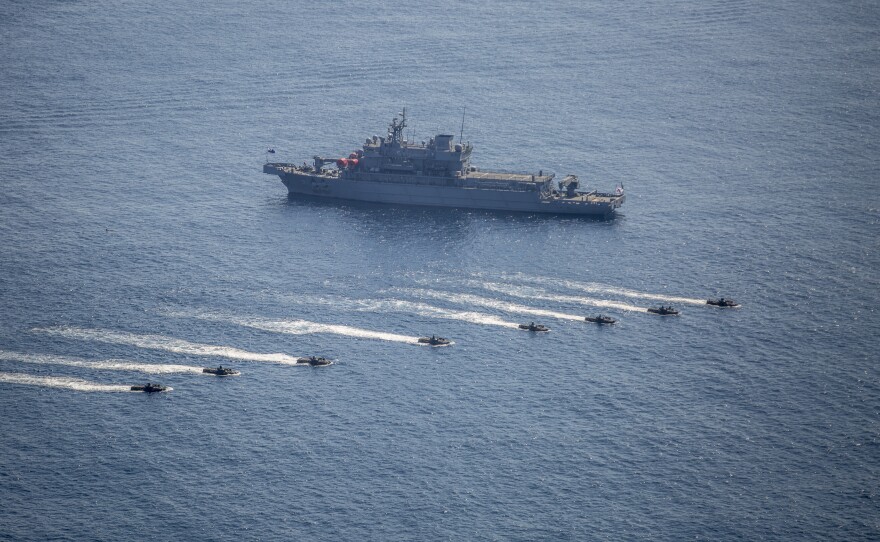San Diego-based Marines and sailors have spent the past several weeks participating in an international amphibious exercise along the South Korean coast. The show of force, involving more than 12,000 U.S. troops, and nearly 8,000 other naval members from South Korea, Australia and New Zealand, was carried out during heightened tensions with North Korea.
In response to the exercise, the North Korean regime conducted its own tests of nuclear capabilities and missile launches, and threatened an all-out offensive.
The 4,500-member force of the San Diego-based Boxer Amphibious Ready Group stormed beaches, tested explosives and practiced amphibious landings.

The group also flew its Osprey helicopters “in a unique opportunity where we lifted Republic of Korea marines from a Republic of Korea navy ship to do an amphibious operation ashore, flying almost 190 kilometers inland with them,” said Col. Anthony Henderson, commander of the Camp Pendleton-based 13th Marine Expeditionary Unit.
"We also had the opportunity to exercise with the Maritime Prepositioning Force,"said Capt. Keith Moore, commodore of the Boxer Amphibious Ready Group. "That was one of the key events this exercise wanted to demonstrate."
Henderson and Moore talked to KPBS last week as the crew was wrapping up its training in South Korea and preparing to head off onto their next mission within the Asia Pacific and Middle East.
Henderson said North Korea’s tests and threats had not interfered with the exercise.

“I would say the tensions we sense are no different than what is known, or what you see at this time on the news and reported generally across the globe,” Henderson said. “We're safe ... and we're taking care of each other."
Moore said the exercise, called Ssang Yong, which is Korean for Twin Dragon, was the largest the unit had ever taken part in.
“The bits and pieces you have have seen on the news does not accurately capture the impact they made and the strategic message they sent on behalf of the United States,” Moore said. “Simply put, they did their jobs exceedingly well and we’re proud of all of them.”

The Boxer Amphibious Ready Group departed San Diego last month for a seven-month deployment to the Asia Pacific region and Middle East. The force of ground combat troops, helicopter squadrons and assault aircraft teams will work together on various missions, including disaster relief and embassy and security evacuations.






